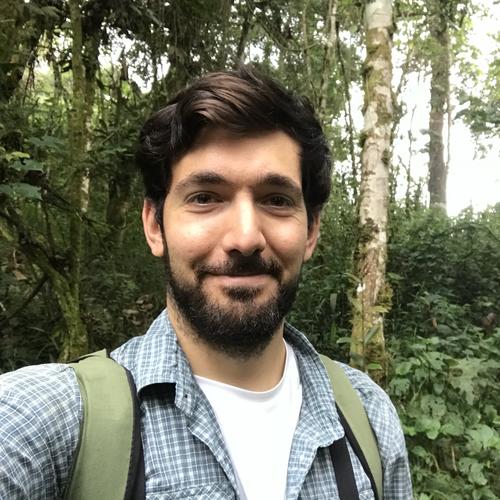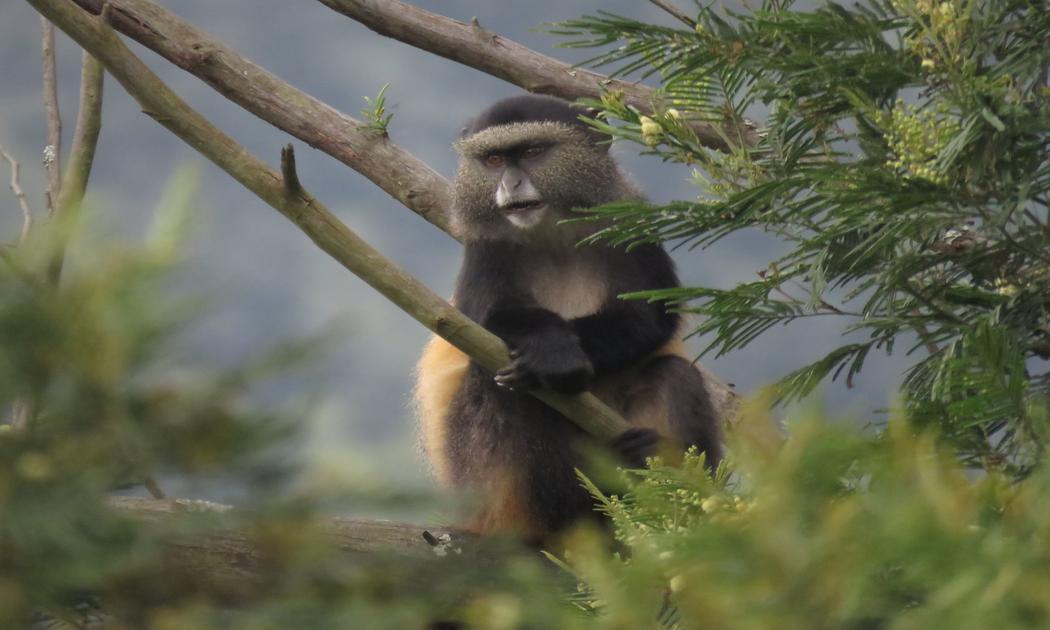
2019 TRI Fellow Seth Inman travelled to the Gishwati forest of Gishwati-Mukura National Park (GMNP) in northwest Rwanda to study changes in forest bird population.
Inman was drawn to Gishwati’s rich biodiversity, endemism, and the need for its conservation. Rwanda has little natural forest outside of their four National Parks, and the parks are under pressure. Gishwati lost 90% of its 1960s forest cover to cattle grazing, fuel wood collection, agriculture, and eucalyptus plantations before being declared a National Park in 2015. Yet, as a forest island in a sea of agriculture, Gishwati is an ideal place to study the effects of habitat fragmentation on bird biodiversity. As Inman comments, “Gishwati is not that well studied and people nearly gave it up as lost cause. My research shows that there are a decent number of endangered, threatened, or rare bird species”.

Image 1. Gishwati forest as seen from the Shinehouse Research Station. (Image copyright 2020 Seth Inman)
Gishwati also reflects the complex balance between protected areas and human livelihoods. There may be increased tension between the park rangers seeking to minimize access to Gishwati and the local people who are no longer allowed to harvest firewood, medicinal plants, and other resources. Crop-raiding chimpanzees pose another potential threat to local livelihoods. The Rwandan government does have a farmer compensation program and they also promote crops, such as tea, that chimpanzees do not like.
While Gishwati brings tourism revenue and provides ecosystem services like drinking water and erosion, Inman notes that the park will only succeed if local communities see direct benefits of conservation, “Rwanda wants to expand the park to include a buffer zone into areas that are currently private pasture lands, but this process requires careful coordination between the government, the safari company, and local stakeholders. There has to be fair compensation and an approach that assures free, prior, and informed consent versus eminent domain.” Inman notes that the Rwanda has a good track record of sharing revenue from gorilla-viewing treks.
Image 2. “Golden monkeys (Cercopithecus kandti) are another vulnerable species in Gishwati that may attract tourists.” (Image copyright 2020 Seth Inman)
Meanwhile, Inman and his field assistant Claver Ntoyinkima have published their initial report documenting 155 bird species identified during his TRI fellowship field work. Highlights include several rare and endangered species, such as the Hooded Vulture (Necrosyrtes monachus), the Gray-Crowned Crane (Balearica regulorum) and Grauer’s Swamp Warbler (Bradypterus graueri). Seth and Claver’s paper, “Recent survey of birds in Gishwati Forest, Rwanda” was recently published in The Journal of East African Ornithology. Seth also found a Black-tailed (previously known as Montane) Oriole (Oriolus percivali) nest that has not yet been described in the literature: “I will be writing up a description with Kristof Zyskowski of the Peabody Museum.”
Claver Ntoyinkima, an expert in bird identification and behavior, has been working as a field guide for a decade and hopes to create his own guiding company. He was also the focus of a short documentary film that was featured at the 2020 Yale Environmental Film Festival. The film entitled, “A Walk Through the Land of 1,000 Hills” can be found here.
Inman is analyzing his data to assess how bird populations are affected by edge effects and fragmentation. He hopes his project can help park managers and conservationists decide how to prioritize management actions that are helpful for species conservation. As he observes, “We need to know how parks like Gishwati are contributing to species conservation. My study will provide key insights into that question, as well as providing data on local habitat dynamics and range”.
You can learn about Seth's research here https://tri.yale.edu/people/seth-inman, and find more of Seth’s bird photography here https://lapazgroup.net/author/setheinman/.
Image 3. The Rwenzori Batis (Batis diops) is one of the endemic birds which also calls Gishwati forest home. (Image copyright 2020 Seth Inman)

